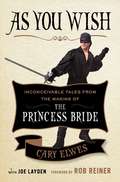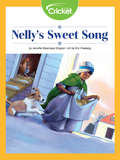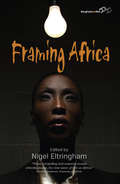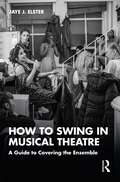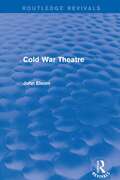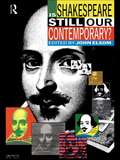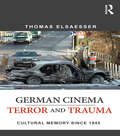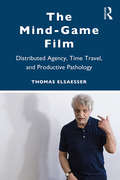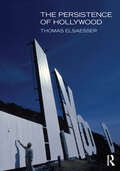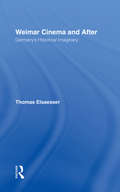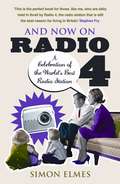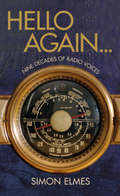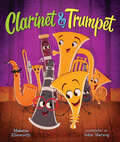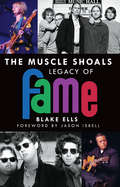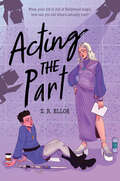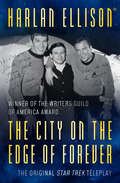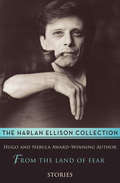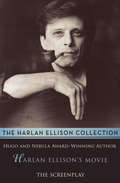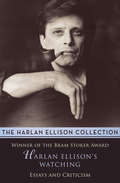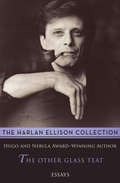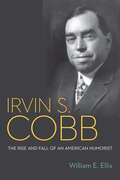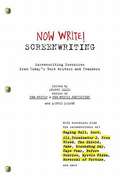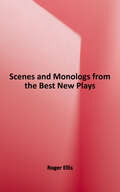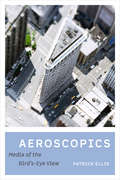- Table View
- List View
As You Wish: Inconceivable Tales from the Making of The Princess Bride
by Cary ElwesFrom actor Cary Elwes, who played the iconic role of Westley in The Princess Bride, comes a first-person account and behind-the-scenes look at the making of the cult classic film filled with never-before-told stories, exclusive photographs, and interviews with costars Robin Wright, Wallace Shawn, Billy Crystal, Christopher Guest, and Mandy Patinkin, as well as author and screenwriter William Goldman, producer Norman Lear, and director Rob Reiner.The Princess Bride has been a family favorite for close to three decades. Ranked by the American Film Institute as one of the top 100 Greatest Love Stories and by the Writers Guild of America as one of the top 100 screenplays of all time, The Princess Bride will continue to resonate with audiences for years to come.Cary Elwes was inspired to share his memories and give fans an unprecedented look into the creation of the film while participating in the twenty-fifth anniversary cast reunion. In As You Wish he has created an enchanting experience; in addition to never-before seen photos and interviews with his fellow cast mates, there are plenty of set secrets and backstage stories.With a foreword by Rob Reiner and a limited edition original poster by acclaimed artist Shepard Fairey, As You Wish is a must-have for all fans of this beloved film.
Nelly's Sweet Song
by Jennifer Riesmeyer ElvgrenNelly’s grandfather has been away fighting in the Revolutionary War. Her entire family wants to make the homecoming special, but Nelly keeps causing trouble! What can she do to welcome him home?
Framing Africa
by Nigel EltringhamThe first decade of the 21st century has seen a proliferation of North American and European films that focus on African politics and society. While once the continent was the setting for narratives of heroic ascendancy over self (The African Queen, 1951; The Snows of Kilimanjaro, 1952), military odds (Zulu, 1964; Khartoum, 1966) and nature (Mogambo, 1953; Hatari!,1962; Born Free, 1966; The Last Safari, 1967), this new wave of films portrays a continent blighted by transnational corruption (The Constant Gardener, 2005), genocide (Hotel Rwanda, 2004; Shooting Dogs, 2006), 'failed states' (Black Hawk Down, 2001), illicit transnational commerce (Blood Diamond, 2006) and the unfulfilled promises of decolonization (The Last King of Scotland, 2006). Conversely, where once Apartheid South Africa was a brutal foil for the romance of East Africa (Cry Freedom, 1987; A Dry White Season, 1989), South Africa now serves as a redeemed contrast to the rest of the continent (Red Dust, 2004; Invictus, 2009). Writing from the perspective of long-term engagement with the contexts in which the films are set, anthropologists and historians reflect on these films and assess the contemporary place Africa holds in the North American and European cinematic imagination.
How to Swing in Musical Theatre: A Guide to Covering the Ensemble
by Jaye J. ElsterHow to Swing in Musical Theatre shines a light on the most universal techniques used by cast members who, in response to absence, can perform multiple roles across an ensemble. This entertaining guide can be used not only to build a step-by-step understanding of what swinging is and how it can be approached, but also as a constant point of reference throughout a career in musical theatre. Providing a suite of practical, technical advice on everything from quick and easy notation to compiling one’s own personal swing ‘bible’, everything that an aspiring or experienced musical theatre performer will need is clearly arranged and thoughtfully explained. This book also teaches the SAFE Strategy, which is recognised as the most functional swing method and introduces the SAFE Principles of Swinging: Safety, Awareness, Function and Evolution. The principles are an original construct, devised to ward off stress and invite positive experience through reasoned behaviours. Musical theatre performers at every level of the profession will find this an invaluable guide that elevates their craft no matter what their previous training, experience or success in the industry.
Cold War Theatre (Routledge Revivals)
by John ElsomCold War Theatre, first published in 1992, provides an account of the theatrical history within the context of East/West politics. Its geographical span ranges from beyond the Urals to the Pacific Coast of the US, and asks whether the Cold War confrontation was not in part due to the cultural climate of Europe. Taking the McCarthy era as its starting point, this readable history considers the impact of the Cold War upon the major dramatic movements of our time, East and West. The author poses the question as to whether European habits of mind, fostered by their cultures, may not have contributed to the political stalemates of the Cold War. A wide range of actors from both the theatrical and political stages are discussed, and their contributions to the theatre of the Cold War examined in a hugely enjoyable and enlightening narrative. This book is ideal for theatre studies students.
Is Shakespeare Still Our Contemporary?
by John ElsomFirst published in 2004. Routledge is an imprint of Taylor & Francis, an informa company.
German Cinema - Terror and Trauma: Cultural Memory Since 1945
by Thomas ElsaesserIn German Cinema – Terror and Trauma Since 1945, Thomas Elsaesser reevaluates the meaning of the Holocaust for postwar German films and culture, while offering a reconsideration of trauma theory today. Elsaesser argues that Germany's attempts at "mastering the past" can be seen as both a failure and an achievement, making it appropriate to speak of an ongoing 'guilt management' that includes not only Germany, but Europe as a whole. In a series of case studies, which consider the work of Konrad Wolf, Alexander Kluge, Rainer Werner Fassbinder, Herbert Achterbusch and Harun Farocki, as well as films made in the new century, Elsaesser tracks the different ways the Holocaust is present in German cinema from the 1950s onwards, even when it is absent, or referenced in oblique and hyperbolic ways. Its most emphatically "absent presence" might turn out to be the compulsive afterlife of the Red Army Faction, whose acts of terror in the 1970s were a response to—as well as a reminder of—Nazism’s hold on the national imaginary. Since the end of the Cold War and 9/11, the terms of the debate around terror and trauma have shifted also in Germany, where generational memory now distributes the roles of historical agency and accountability differently. Against the background of universalized victimhood, a cinema of commemoration has, if anything, confirmed the violence that the past continues to exert on the present, in the form of missed encounters, retroactive incidents, unintended slippages and uncanny parallels, which Elsaesser—reviving the full meaning of Freud’s Fehlleistung—calls the parapractic performativity of cultural memory.
The Mind-Game Film: Distributed Agency, Time Travel, and Productive Pathology
by Thomas ElsaesserThis book represents the culmination of Thomas Elsaesser’s intense and passionate thinking about the Hollywood mind-game film from the previous two decades. In order to answer what the mind-game film is, why they exist, and how they function, Elsaesser maps the industrial-institutional challenges and constraints facing Hollywood, and the broader philosophic horizon within which American cinema thrives today. He demonstrates how the ‘Persistence of Hollywood’ continues as it has adapted to include new twists and turns, as well as revisions of past concerns, as film moves through the 21st century. Through examples such as Minority Report, Mulholland Drive, Source Code, and Back to the Future, Elsaesser explores how mind-game films challenge us and play games with our perception of reality, creating skepticism and (self-) doubt. He also highlights the mind-game film's tendency to intervene in a complex fashion in the political moment by questioning the dominant power’s intent to program both body and mind alike. Prescient and compelling, The Mind-Game Film will appeal to students, scholars, and enthusiasts of media studies, film studies, philosophy, and politics.
The Persistence of Hollywood
by Thomas ElsaesserWhile Hollywood’s success – its persistence – has remained constant for almost one hundred years, the study of its success has undergone significant expansion and transformation. Since the 1960s, Thomas Elsaesser’s research has spearheaded the study of Hollywood, beginning with his classic essays on auteurism and cinephilia, focused around a director’s themes and style, up to his analysis of the "corporate authorship" of contemporary director James Cameron. In between, he has helped to transform film studies by incorporating questions of narrative, genre, desire, ideology and, more recently, Hollywood’s economic-technological infrastructure and its place within global capitalism. The Persistence of Hollywood brings together Elsaesser’s key writings about Hollywood filmmaking. It includes his detailed studies of individual directors (including Minnelli, Fuller, Ray, Hitchcock, Lang, Altman, Kubrick, Coppola, and Cameron), as well as essays charting the shifts from classic to corporate Hollywood by way of the New Hollywood and the resurgence of the blockbuster. The book also presents a history of the different critical-theoretical paradigms central to film studies in its analysis of Hollywood, from auteurism and cinephilia to textual analysis, Marxism, psychoanalysis, and post-industrial analysis.
Weimar Cinema and After: Germany's Historical Imaginary
by Thomas ElsaesserGerman cinema of the 1920s is still regarded as one of the 'golden ages' of world cinema. Films such as The Cabinet of Dr Caligari, Dr Mabuse the Gambler, Nosferatu, Metropolis, Pandora's Box and The Blue Angel have long been canonised as classics, but they are also among the key films defining an image of Germany as a nation uneasy with itself. The work of directors like Fritz Lang, F.W. Murnau and G.W. Pabst, which having apparently announced the horrors of fascism, while testifying to the traumas of a defeated nation, still casts a long shadow over cinema in Germany, leaving film history and political history permanently intertwined.Weimar Cinema and After offers a fresh perspective on this most 'national' of national cinemas, re-evaluating the arguments which view genres and movements such as 'films of the fantastic', 'Nazi Cinema', 'film noir' and 'New German Cinema' as typically German contributions to twentieth century visual culture. Thomas Elsaesser questions conventional readings which link these genres to romanticism and expressionism, and offers new approaches to analysing the function of national cinema in an advanced 'culture industry' and in a Germany constantly reinventing itself both geographically and politically.Elsaesser argues that German cinema's significance lies less in its ability to promote democracy or predict fascism than in its contribution to the creation of a community sharing a 'historical imaginary' rather than a 'national identity'. In this respect, he argues, German cinema anticipated some of the problems facing contemporary nations in reconstituting their identities by means of media images, memory, and invented traditions.
And Now on Radio 4: A Celebration of the World's Best Radio Station
by Simon ElmesAnd Now on Radio 4 offers an enthusiast's guide to the shows that have made Radio 4 what it is, and also explores some of the wonderful corners of the network's history that are long forgotten by all but a few. Who, for instance, now recalls Ronnie Barker's starring role on Radio 4 in a sophisticated cabaret-cum-sketch-show called Lines from My Grandfather's Forehead? What about Spike Milligan's intimate, soul-bearing account of his upbringing in colonial India, Plain Tales from the Raj? And who now remembers that Start the Week was once hosted by Russell Harty, a bit of programming compared by one insider to letting Graham Norton run Newsnight.In order to reflect the way devotees listen to Radio 4, the book is organised not on simple chronological lines but in the form of a typical day. Chapter by chapter, the day evolves, from Farming Today, through the daily feast that is Today, through the morning menu of conversation, Woman's Hour, documentary and comedy. Lunchtime brings The World at One. The early evening, of course, yields The Archers. And finally there's Book at Bedtime and Sailing By.An addictive mix of history, biography, anecdote and occasional useless fact, this is the perfect book for Radio 4 aficionados.
Hello Again: Nine decades of radio voices
by Simon ElmesIt’s now ninety years since the BBC made its first broadcast and the British love affair with radio began.This book is a journey through that fascinating history and a celebration of the many wonderful voices that were part of it: Marion Cran, who pioneered the first gardening programme in the 1920s; The Goons and Kenneth Horne, comedy greats of the 1950s; John Peel, Alan Freeman, Kenny Everett and other heroes of the pirate stations; all the way up to Eddie Mair, Fi Glover and Danny Baker, the much-loved voices of today. A delightful blend of insight, history and nostalgia, Hello Again will appeal to any radio aficionado.
Clarinet and Trumpet
by Melanie EllsworthA charming and funny picture book featuring the harmonious friendship between Clarinet and Trumpet. But what happens when their friendship falls flat? Perfect for fans of Stick & Stone and Spoon.
Muscle Shoals Legacy of FAME, The
by Blake Ells Jason IsbellFAME Publishing first opened in 1959 and produced hits for great musicians like Etta James, Clarence Carter and Aretha Franklin. Not long after, the city of Muscle Shoals became known as the "Hit Recording Capital of the World." FAME was the foundation that produced Muscle Shoals Sound Studio, the Nutthouse and Sundrop Sound at Single Lock Records--studios that gave a voice to artists like Drive-By Truckers, Jason Isbell and the 400 Unit and John Paul White. A new generation, including the Pollies and Doc Dailey & the Magnolia Devil, today carries the tradition of great music. Through extensive research, and enriched with interviews from those who lived it, local author Blake Ells chronicles the epic story that started with FAME.
Acting the Part
by Z.R. EllorThis delightfully tropey teen romance perfect for fans of Ashley Poston and Lyla Lee follows a queer teen actor navigating their gender identity—while pretending to date their co-star. Queer actor Lily Ashton has found fame playing lesbian warrior Morgantha on the hit TV show Galaxy Spark. Lily knows how little representation queer girls have, so when the showrunners reveal that Morgantha’s on-screen love interest, Alietta, is going to be killed off, Lily orchestrates an elaborate fake-dating scheme with the standoffish actress who plays her, to generate press and ensure a happy ending for the #Morganetta ship.But while playing a doting girlfriend on- and off-screen, Lily struggles with whether a word like “girl” applies to them at all.Lily’s always been good at playing a part. But are they ready to share their real self, even if it means throwing everything they’ve fought for away?
The City on the Edge of Forever: The Original Teleplay
by Harlan EllisonThe original teleplay that became the classic Star Trek episode, with an expanded introductory essay by Harlan Ellison, The City on the Edge of Forever has been surrounded by controversy since the airing of an "eviscerated" version--which subsequently has been voted the most beloved episode in the series' history. In its original form, The City on the Edge of Forever won the 1966-67 Writers Guild of America Award for best teleplay. As aired, it won the 1967 Hugo Award. The City on the Edge of Forever is, at its most basic, a poignant love story. Ellison takes the reader on a breathtaking trip through space and time, from the future, all the way back to 1930s America. In this harrowing journey, Kirk and Spock race to apprehend a renegade criminal and restore the order of the universe. It is here that Kirk faces his ultimate dilemma: a choice between the universe--or his one true love. This edition makes available the astonishing teleplay as Ellison intended it to be aired. The author's introductory essay reveals all of the details of what Ellison describes as a "fatally inept treatment" of his creative work. Was he unjustly edited, unjustly accused, and unjustly treated?
From the Land of Fear: Stories
by Harlan EllisonEleven side trips to the dark edge of imagination by master storyteller Harlan Ellison, From the Land of Fear presents some of the author's early work from his start in the late fifties. Here you can see a vibrant, imaginative young writer honing his craft and sowing the seeds of what would become his brilliant career, including the standout piece "Soldier," a clever antiwar tale included both in short-story form and as a screenplay for TV's The Outer Limits. True Ellison fans will enjoy this collection as a chance to see the writer's growth over time. As Roger Zelanzy says in his wonderful Introduction, "He is what he is because of everything he's been up until the Now."
Harlan Ellison's Movie: The Screenplay
by Harlan EllisonHerein lies in written form Harlan Ellison's Movie, the full-length feature film Ellison created when a producer at 20th Century-Fox said, "If we gave you the money, and no interference, what sort of movie would you write?" Well, that producer is no longer at the studio; he left the entire venue of moviemaking after Harlan Ellison's Movie was seen by the Suits. There is no use even trying to describe what the film is about, except to confirm the long-standing rumor that it contains a scene in which a 70-foot-tall boll weevil chews and swallows an entire farmhouse and silo on-camera. (It is Scene 33C.)
Harlan Ellison's Watching: Essays and Criticism
by Harlan EllisonOstensibly, this is a collection of Harlan Ellison's twenty-five years of essays and film criticism for various publications. What it is in reality is pure, raw, unapologetic opinion. Star Wars? "Luke Skywalker is a nerd and Darth Vader sucks runny eggs." Big Trouble in Little China? "A cheerfully blathering live-action cartoon that will give you release from the real pressures of your basically dreary lives." Despite working within the industry himself, Ellison never learned how to lie. So punches go un-pulled, the impersonal becomes personal, and the reader is left feeling like they have read something someone actually meant. It is a gauntlet, for sure, but it is also an exhilarating release.
The Other Glass Teat: Essays
by Harlan EllisonIn the late 1960s, Harlan Ellison launched a weekly column for the Los Angeles Free Press, where he uncompromisingly discussed the effects of television on modern society. He assaulted everything from television sitcoms to corrupt politicians, talk shows to military massacres. Today, more than four decades later, almost all of his criticism still holds true. Open Road and Edgeworks Abbey, Ellison's company, are proud to make this second volume of fifty-two outspoken columns widely available.
Irvin S. Cobb: The Rise and Fall of an American Humorist
by William E. Ellis"Humor is merely tragedy standing on its head with its pants torn."—Irvin S. Cobb Born and raised in Paducah, Kentucky, humorist Irvin S. Cobb (1876–1944) rose from humble beginnings to become one of the early twentieth century's most celebrated writers.
Now Write! Screenwriting
by Ellis Sherry Laurie LamsonAn essential handbook featuring never-before-published writing exercises from the acclaimed screenwriters of Raging Bull, Ali, Terminator 2, Fame, Groundhog Day, Cape Fear, "Lost", "True Blood", "The Shield", and many other hit films and television shows. Now Write! Screenwriting-the latest addition to the Now Write! writing guide series-brings together the acclaimed screenwriters of films like the Oscar-winning Raging Bull, Oscar- nominated Ali, era-defining blockbuster Terminator 2, musical classic Fame, hit series "Lost" "True Blood" and "The Shield," Groundhog Day, Cape Fear, Chicken Run, Reversal of Fortune, Before Sunrise, Mystic Pizza, Indecent Proposal, and many more, to teach the art of the story. *Learn about why it is sometimes best to write what you don't know from Christina Kim ('Lost') *Find out how Stephen Rivele (Ali, Nixon) reduces his screenplay ideas down to their most basic elements, and uses that as a writing guide *Learn why you should focus on your character, not your plot, when digging yourself out of a plot home from Danny Rubin (Groundhog Day) *Take tips from Karey Kirkpatrick (Chicken Run, The Spiderwick Chronicles) on how to give an inanimate object intense emotional significance *Let Kim Krizan (Before Sunrise, Before Sunset) teach you how to stop your internal critic dead in his tracks This lively and easy-to-read guide will motivate both aspiring and experienced screenwriters. No other screenwriting book offers advice and exercises from this many writers of successful, iconic films. .
As Glenn as Can Be
by Sarah EllisA warm and witty portrait of child prodigy and world-famous classical musician Glenn Gould. Glenn was a child who knew his own mind — he liked boats but did not like fishing; he enjoyed puns and pranks but did not like bullying; he loved learning but did not like school … but more than anything else he loved to play the piano. Glenn had a professional performing career by the time he was fifteen; he gave concerts all over the world in his twenties. He became best known for his interpretation of Bach’s Goldberg Variations. But Glenn grew to dislike concerts — the hall was too cold, or he didn’t feel well, or the audience made too much noise (he didn’t even like their applause!). He discovered that when he played and recorded music in an empty concert hall, he could make it sound exactly the way he wanted. He could do what he loved best, while being completely himself. Sarah Ellis’s beautifully written portrait of Glenn Gould is complemented by Nancy Vo’s gorgeous illustrations, bringing the life and times of this extraordinarily talented musician to readers young and old. Includes a fascinating author’s note and resources for further information. Key Text Features additional information afterword author’s note bibliography biographical information biographical note explanation facts further information further reading historical context illustrations informational note photographs sources vignettes writing inspiration Correlates to the Common Core State Standards in English Language Arts: CCSS.ELA-LITERACY.RL.K.7 With prompting and support, describe the relationship between illustrations and the story in which they appear (e.g., what moment in a story an illustration depicts). CCSS.ELA-LITERACY.RL.1.2 Retell stories, including key details, and demonstrate understanding of their central message or lesson. CCSS.ELA-LITERACY.RL.1.7 Use illustrations and details in a story to describe its characters, setting, or events.
Scenes and Monologs from the Best New Plays: An Anthology of New Dramatic Writing from Professionally Produced American Plays
by Roger EllisThis book is a practical resource for acting and directing students of all ages middle through high school, college, and professionals young and old. Its 30 duet scenes and eight monologues include a fair sampling of the late 20th-century work of playwrights across the United States. These excerpts are highly original in that few people can claim to have read or seen them performed, though they have all been produced regionally. The gallery of characters contained in these pages offers readers an arresting and kaleidoscopic reflection of American society. The literary styles one encounters here demonstrate the range and power of American writers who will continue to shape theatrical techniques for years to come. Overall, this anthology provides a generous sampling of vital and compelling treatments of our social, artistic, and spiritual experiences of the late 20th century.
Aeroscopics: Media of the Bird's-Eye View
by Patrick EllisIn 1900, Paris had no skyscrapers, no tourist helicopters, no drones. Yet well before aviation made aerial views more accessible, those who sought such vantages had countless options available to them. They could take in the vista from an observation ride, see a painting of the view from Notre-Dame, or overlook a miniature model city. In Aeroscopics, Patrick Ellis offers a history of the view from above, written from below. Richly illustrated and premised upon extensive archival work, this interdisciplinary study reveals the forgotten media available to the public in the Balloon Era and after. Ellis resurrects these neglected spectacles as "aeroscopics," opening up new possibilities for the history of aerial vision.
